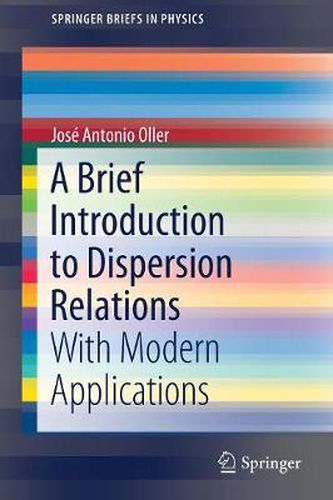Readings Newsletter
Become a Readings Member to make your shopping experience even easier.
Sign in or sign up for free!
You’re not far away from qualifying for FREE standard shipping within Australia
You’ve qualified for FREE standard shipping within Australia
The cart is loading…






This title is printed to order. This book may have been self-published. If so, we cannot guarantee the quality of the content. In the main most books will have gone through the editing process however some may not. We therefore suggest that you be aware of this before ordering this book. If in doubt check either the author or publisher’s details as we are unable to accept any returns unless they are faulty. Please contact us if you have any questions.
This text offers a brief introduction to the dispersion relations as an approach to calculate S-matrix elements, a formalism that allows one to take advantage of the analytical structure of scattering amplitudes following the basic principles of unitarity and causality. First, the case of two-body scattering is considered and then its contribution to other processes through final-state interactions is discussed. For two-body scattering amplitudes, the general expression for a partial-wave amplitude is derived in the approximation where the crossed channel dynamics is neglected. This is taken as the starting point for many interesting nonperturbative applications, both in the light and heavy quark sector. Subsequently crossed channel dynamics is introduced within the equations for calculating the partial-wave amplitudes. Some applications based on methods that treat crossed-channel dynamics perturbatively are discussed too.
The last part of this introductory treatment is dedicated to the further impact of scattering amplitudes on a variety of processes through final-state interactions. Several possible approaches are discussed such as the Muskhelishvili-Omnes dispersive integral equations and other closed formulae. These different formalisms are then applied in particular to the study of resonances presenting a number of challenging properties. The book ends with a chapter illustrating the use of dispersion relations in the nuclear medium for the evaluation of the energy density in nuclear matter.
$9.00 standard shipping within Australia
FREE standard shipping within Australia for orders over $100.00
Express & International shipping calculated at checkout
This title is printed to order. This book may have been self-published. If so, we cannot guarantee the quality of the content. In the main most books will have gone through the editing process however some may not. We therefore suggest that you be aware of this before ordering this book. If in doubt check either the author or publisher’s details as we are unable to accept any returns unless they are faulty. Please contact us if you have any questions.
This text offers a brief introduction to the dispersion relations as an approach to calculate S-matrix elements, a formalism that allows one to take advantage of the analytical structure of scattering amplitudes following the basic principles of unitarity and causality. First, the case of two-body scattering is considered and then its contribution to other processes through final-state interactions is discussed. For two-body scattering amplitudes, the general expression for a partial-wave amplitude is derived in the approximation where the crossed channel dynamics is neglected. This is taken as the starting point for many interesting nonperturbative applications, both in the light and heavy quark sector. Subsequently crossed channel dynamics is introduced within the equations for calculating the partial-wave amplitudes. Some applications based on methods that treat crossed-channel dynamics perturbatively are discussed too.
The last part of this introductory treatment is dedicated to the further impact of scattering amplitudes on a variety of processes through final-state interactions. Several possible approaches are discussed such as the Muskhelishvili-Omnes dispersive integral equations and other closed formulae. These different formalisms are then applied in particular to the study of resonances presenting a number of challenging properties. The book ends with a chapter illustrating the use of dispersion relations in the nuclear medium for the evaluation of the energy density in nuclear matter.